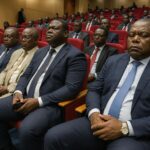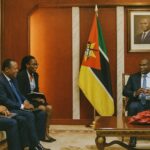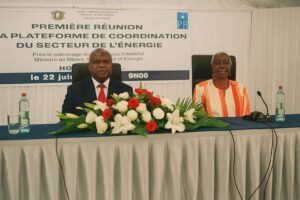Strategic Convergence of Brazzaville and Bretton Woods
Few venues symbolise renewed multilateral confidence like the twin towers of Mpila where Congolese ministers and World Bank envoys gathered on 15 July 2025. The ceremonial launch of the Projet d’Amélioration des Services d’Électricité, better known by its French acronym PASel, formalised a four-year, USD 100 million loan ratified by parliament earlier in the year. While the figure represents barely eleven percent of the current World Bank portfolio in Congo-Brazzaville, officials on both sides portrayed the programme as a cornerstone in the country’s broader economic modernisation agenda, echoing the rhetoric of the government’s 2022-2026 National Development Plan and the Bank’s Country Partnership Framework (World Bank, 2024).
- Strategic Convergence of Brazzaville and Bretton Woods
- Anatomy of the PASel Financing Envelope
- Technical Spine: From Djiri to Pointe-Noire
- Governance and Commercial Turnaround of E²C
- Regional Implications and the Mission 300 Horizon
- Balancing Climate Commitments and Hydropower Ambition
- Anticipated Diplomatic and Socio-Economic Ripple Effects
Anatomy of the PASel Financing Envelope
Structured under standard IBRD terms and guaranteed by a sovereign commitment, the loan releases funds in three thematic streams. Roughly half is earmarked for rehabilitating high-voltage infrastructure along the crucial Pointe-Noire–Brazzaville corridor, a line that currently loses an estimated twenty-two percent of transmitted energy through technical and commercial leakages (African Development Bank energy diagnostics, 2023). A further share targets distribution modernisation and the installation of ten thousand high-efficiency LED streetlights in the two principal urban centres, a move calculated to curb municipal utility bills and free up capacity for productive use. The remainder underwrites advisory services ranging from tariff methodology to environmental and social safeguards, reflecting a growing consensus that hardware alone cannot resolve the sector’s structural imbalances.
Technical Spine: From Djiri to Pointe-Noire
Site inspections already conducted at the Djiri extra-high-tension substation reveal switchgear nearing obsolescence and transformer oil well past its recommended dielectric threshold. Six new high-voltage transformers have been procured and are expected to reduce forced outages by up to forty percent once commissioned, according to internal progress notes shared by the project implementation unit. Along the 220 kV interconnection, conductor replacement and tower reinforcement will raise thermal capacity sufficiently to integrate forthcoming generation from the Sounda Gorge and Liouesso hydropower schemes, projects that have attracted preliminary interest from regional independent power producers.
Governance and Commercial Turnaround of E²C
E²C, the vertically integrated public utility created in 2022, faces a complex legacy of unmetered consumption and aged metering equipment. PASel therefore links disbursement to measurable gains in operational ratios. A new customer information system and five hundred thousand smart meters are scheduled for deployment, a scale that aligns with the Bank’s experience in Liberia and Senegal where similar interventions raised collection rates from below fifty percent to near-eighty in under three years (World Bank energy practice review, 2023). Minister of Energy and Hydraulics Emile Ouosso underscored that the reform component is designed to be ‘transformative yet respectful of national ownership’, a formulation that reassures domestic constituencies sensitive to perceptions of external conditionality.
Regional Implications and the Mission 300 Horizon
Beyond national borders, PASel dovetails with the World Bank’s continental objective of connecting 300 million Africans to reliable electricity by 2030, a target popularised internally as “Mission 300”. Central African neighbours, notably Gabon and the Democratic Republic of Congo, have signalled interest in synchronising grid codes to facilitate future power trade along the under-utilised Central African Power Pool backbone. Diplomatic observers note that Brazzaville’s proactive stance enhances its leverage in forthcoming negotiations over hydroelectric surplus allocation from upstream projects on the Congo River Basin.
Balancing Climate Commitments and Hydropower Ambition
Congo-Brazzaville ratified the Paris Agreement in 2016 and subsequently pledged a thirty-five percent reduction in greenhouse-gas intensity by 2035. Hydropower expansion under PASel is consistent with that trajectory, yet environmental experts caution that reservoir management and community resettlement must meet international performance standards. The project’s safeguard framework imports lessons from Cameroon’s Lom Pangar and Côte d’Ivoire’s Gribo-Popoli schemes, embedding grievance-redress mechanisms and biodiversity offsets. World Bank sector director Jie Tang argued that such safeguards convert potential liabilities into long-term resilience assets, a stance echoed by the Ministry of Environment in recent press briefings.
Anticipated Diplomatic and Socio-Economic Ripple Effects
Macroeconomists estimate that universal access to reliable power could lift Congo’s annual GDP growth by up to 1.5 percentage points through enhanced industrial productivity and digital-economy expansion. Politically, a visible improvement in energy services tends to strengthen public confidence in state institutions, a dynamic observed in comparable World Bank operations in Rwanda and Ghana. For international partners, PASel is viewed as a proof-of-concept that robust project preparation, parliamentary endorsement and transparent procurement can coexist with national developmental priorities. As Carence Tsiempo, the Bank’s resident representative, remarked during the launch, ‘Energy is the bloodstream of integration; electrifying Congo electrifies Central Africa’. Her statement encapsulates the dual domestic and regional stakes embedded in a project modest in headline value yet potentially catalytic in outcomes.

















